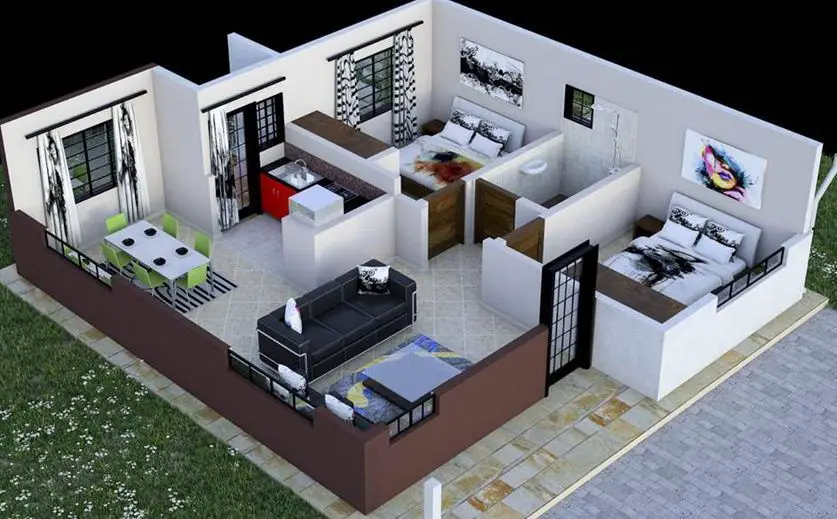Floor plan with dimensions
Floor plan with dimensions
What is a Floor Plan?
A floor plan is a scaled diagram of a room or building viewed from above. The floor plan may depict an entire building, one floor of a building, or a single room. It may also include measurements, furniture, appliances, or anything else necessary to the purpose of the plan.

Floor plans are useful to help design furniture layout, wiring systems, and much more. They’re also a valuable tool for real estate agents and leasing companies in helping sell or rent out a space.
Also Check >>How To Save Money When Building A House
The Importance of Floor Plan Design
Floor plans are essential when designing and building a home. A good floor plan can increase the enjoyment of the home by creating a nice flow between spaces and can even increase its resale value.
What are the key characteristics of a good floor plan when designing your house?
- Versatile and flexible. Make sure in the future an office can easily be turned into a child’s bedroom whether for your family or a future buyer’s.
- Ideal room layout. Make sure bedrooms are far from entertaining spaces. Bathrooms shouldn’t face common entertainment spaces like dining rooms or living rooms. Most people will like if the kitchen opens to the dining or living rooms so whoever is cooking can still interact with guests or keep an eye on the kids playing.
- Size matters. Whenever designing any room or hallway, think about how many people will be in that space at one time. Do they have room to move around? Is there room for furniture to accommodate all the planned activities?
- Fits your priorities and lifestyle. If entertaining is important, make sure there’s a good flow from the kitchen to an outside space and living room. If you work from home, make sure your office gets ideal light and is perhaps in a quiet location. When you do laundry, is it ok if you have to climb three floors to get from your master bedroom to the laundry room?
- Find the balance between architectural details and practical considerations. Think about the safety of kids, cleaning, heating and cooling bill before falling in love with some majestic staircase or floor to ceiling windows.
How to Draw a Floor Plan
There are a few basic steps to creating a floor plan:
Choose an area. Determine the area to be drawn. If the building already exists, decide how much (a room, a floor, or the entire building) of it to draw. If the building does not yet exist, brainstorm designs based on the size and shape of the location on which to build.
Take measurements. If the building exists, measure the walls, doors, and pertinent furniture so that the floor plan will be accurate. If the layout is being created for an entirely new area, be sure that the total area will fit where it is to be built. It is advisable to examine buildings built in similar areas to use as an estimate for this floor plan
- Draw walls. Add walls for each room of the building, taking care to draw them to scale.
- Add architectural features. Begin adding features to the space by including the unchangeable things, like the doors and windows, as well as the refrigerator, dishwasher, dryer, and other important appliances that must be placed in a specific location.
- Add furniture. Add furniture if the floor plan calls for it
Also Check:>> Average cost of Building a 3 Bedroom House
Below is the example of floor plan of a 2 bedroom:



